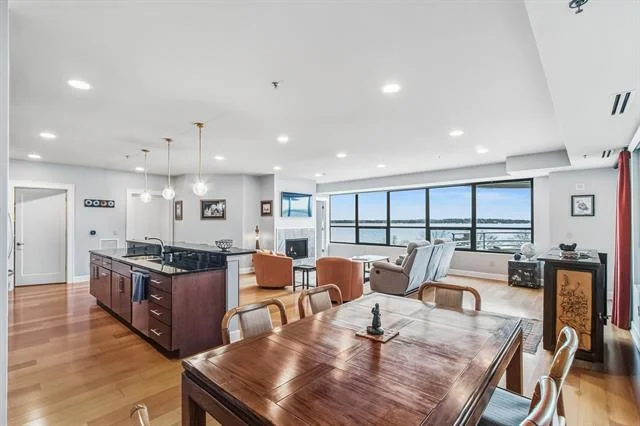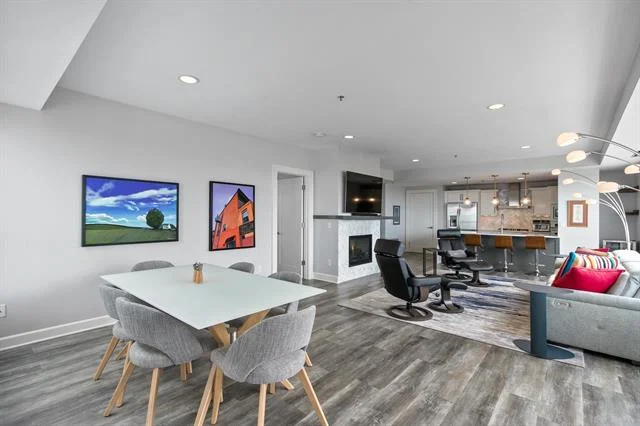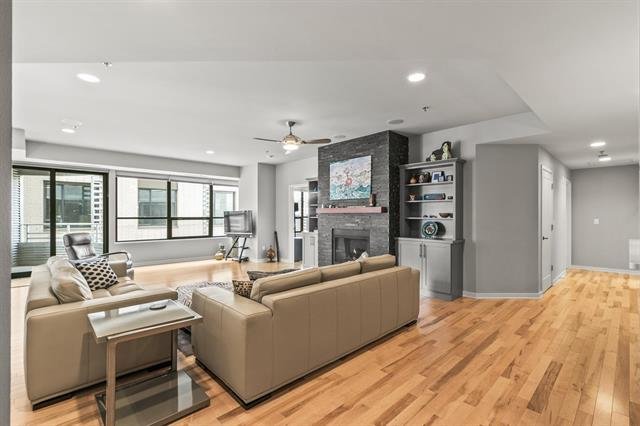The 35 Best Skyscrapers in the World
From the iconic Burj Khalifa in Dubai to the distinctive Agbar Tower in Barcelona, these skyscrapers share a common trait—stunning design. Over the past century, skyscrapers have not only reached unprecedented heights but have also become architectural masterpieces that define city skylines. Let’s explore the 35 most beautiful skyscrapers around the globe, each telling a unique story of innovation and ambition.
The Evolution of Skyscrapers
In the early days, the primary goal was to build taller structures. Today, the focus has shifted to creating beautiful and functional skyscrapers. As architectural critic Ada Louise Huxtable noted, “The skyscraper is this century’s most stunning architecture phenomenon.” With the Burj Khalifa standing at 2,717 feet tall, modern skyscrapers dwarf the first ten-story Home Insurance Building in Chicago, built in 1884.
Best Skyscrapers in the World
Designing a skyscraper is a dream for many architects. From Art Deco to neo-futuristic styles, these buildings showcase the evolution of urban architecture. Each city’s skyline is a testament to human ingenuity and aspiration. Here are 35 skyscrapers that exemplify these qualities:
1. Abode318 (Melbourne, Australia)
Abode318, designed by Elenberg Fraser and Disegno Australia, features a wave-like design that provides insulation for its 450 residential apartments. The building offers some of the best views in Melbourne and incorporates sustainable architectural practices.
2. Willis Tower (Chicago, Illinois)
Formerly known as the Sears Tower, the Willis Tower has been an iconic part of Chicago’s skyline since 1973. It boasts one of the tallest observation decks in the Western Hemisphere, attracting millions of visitors each year. The Skydeck offers thrilling views from “The Ledge,” glass boxes extending 4.3 feet outside the building.
3. Transamerica Pyramid (San Francisco, California)
Designed by William Pereira, this futuristic building has become symbolic of San Francisco. Its peak, known as the “Crown Jewel,” illuminates on special occasions. The building’s unique shape allows for natural light to penetrate the surrounding streets, enhancing the urban environment.
4. Al Hamra Tower (Kuwait City, Kuwait)
Standing at 1,358 feet, Al Hamra Tower, designed by Skidmore, Owings & Merrill and Ramshir and Callison, creates an illusion of movement with its unique design. The building’s curved facade reduces solar heat gain, making it an energy-efficient structure in Kuwait’s hot climate.
5. 432 Park Avenue (New York, New York)
At 1,396 feet, 432 Park Avenue is the tallest residential building in the Western Hemisphere. Designed by Rafael Viñoly, its block-like structure adds a distinct pattern to the New York skyline. The minimalist design features expansive views of Central Park and the Manhattan skyline.
6. Marina Bay Sands Hotel (Singapore)
This iconic building, designed by Moshe Safdie, is known for its three-column structure connected by the world’s largest rooftop infinity pool. The integrated resort includes a hotel, casino, shopping mall, and an observation deck offering panoramic views of Singapore.
7. Agbar Tower (Barcelona, Spain)
Designed by Jean Nouvel, Agbar Tower’s bullet-shaped construction and mosaic glass exterior pay homage to Barcelona’s architectural roots. The building’s facade consists of 4,500 window openings that provide natural ventilation, enhancing its environmental sustainability.
8. Tokyo Skytree (Tokyo, Japan)
Tokyo Skytree, designed by Nikken Sekkei, resembles a Japanese pagoda and attracts tourists with its spectacular observation deck and nightly light shows. The tower also serves as a broadcasting hub, ensuring clear signals for digital television and radio throughout the region.
9. Shanghai Tower (Shanghai, China)
This slightly curved trapezoid building with a rectangular gap was designed by Kohn Pedersen Fox and completed in 2008. The observation decks offer breathtaking views of Shanghai, and the building’s unique shape is engineered to withstand earthquakes and strong winds.
10. Abraj Al-Bait Tower (Mecca, Saudi Arabia)
Designed by SL Rasch, this four-faced clock tower overlooks the Great Mosque of Mecca and has become a beacon for worshippers. The complex also includes a shopping mall, residential apartments, and a conference center, making it a multifunctional space for visitors.
11. John Hancock Center (Chicago, Illinois)
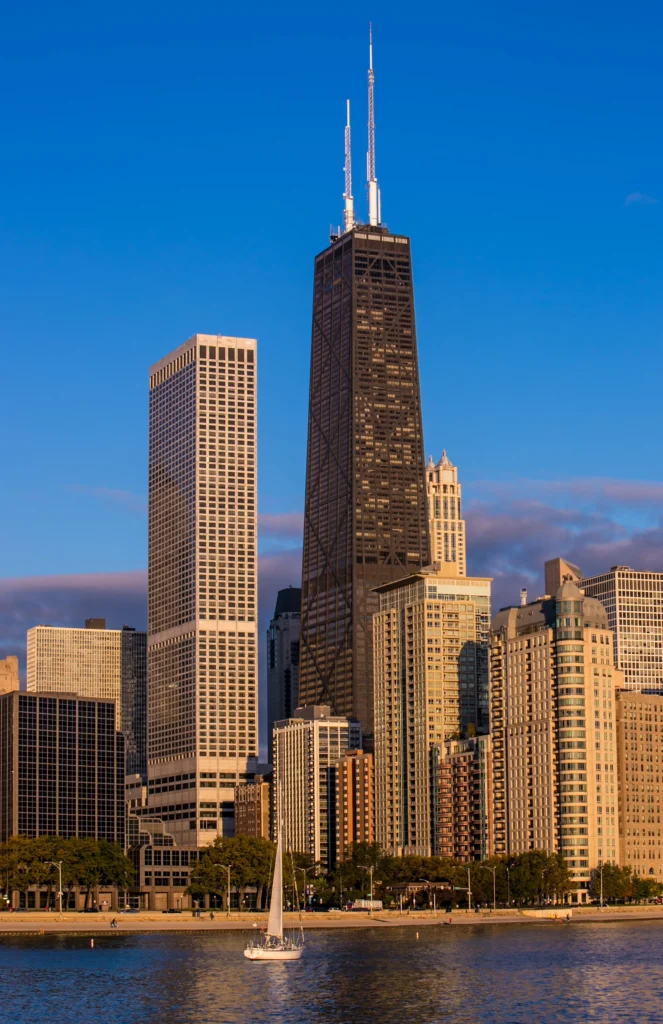
Designed by Skidmore, Owings & Merrill, this iconic building features a geometric design and twin antennae. The John Hancock Center offers residential, office, and commercial spaces, along with the famous 360 Chicago observation deck and the Tilt! experience.
12. Turning Torso (Malmö, Sweden)
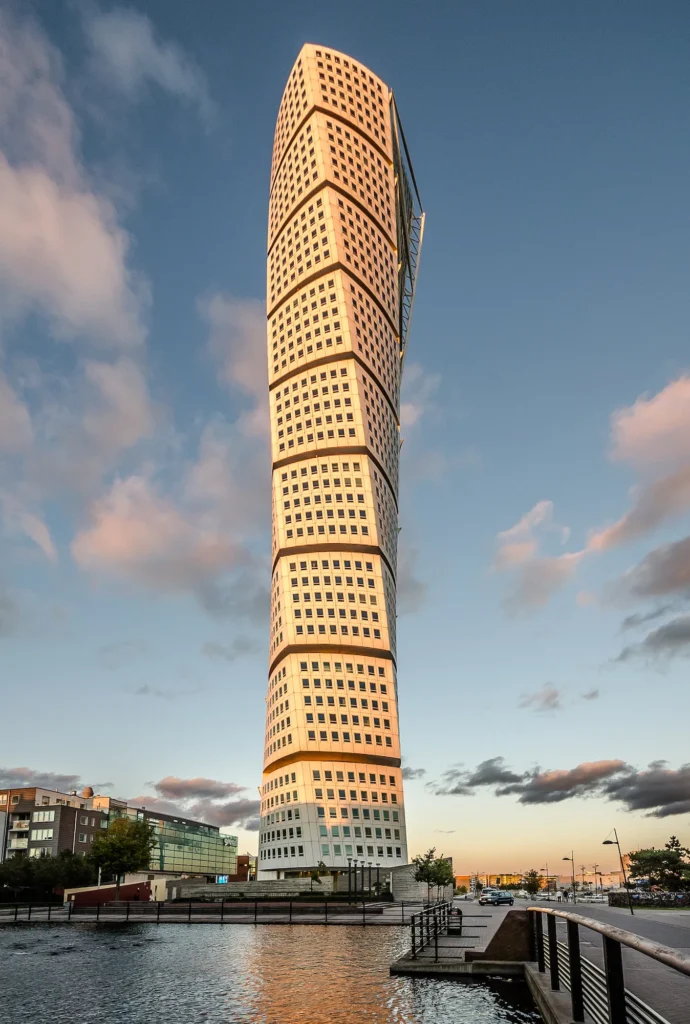
Santiago Calatrava’s Turning Torso is a neofuturistic residential skyscraper that twists 90 degrees from its base to its top floor. The building’s design is inspired by a sculpture of a twisting human torso, symbolizing dynamic movement and modern architectural innovation.
13. Taipei 101 (Taipei, Taiwan)
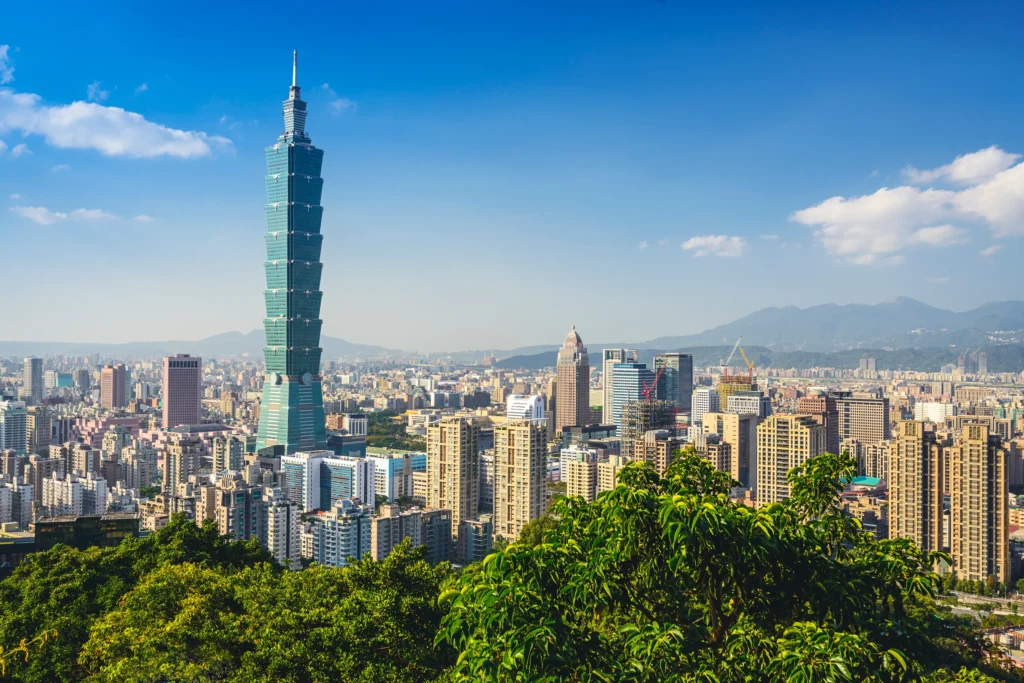
Designed by Chu-Yuan Lee and C.P. Wang, Taipei 101’s 101 stories symbolize a new beginning. Its design is rooted in traditional Chinese architecture. The building features the world’s fastest elevators, capable of reaching speeds of 60.6 km/h, whisking visitors to the observation deck in seconds.
14. Canton Tower (Guangzhou, China)
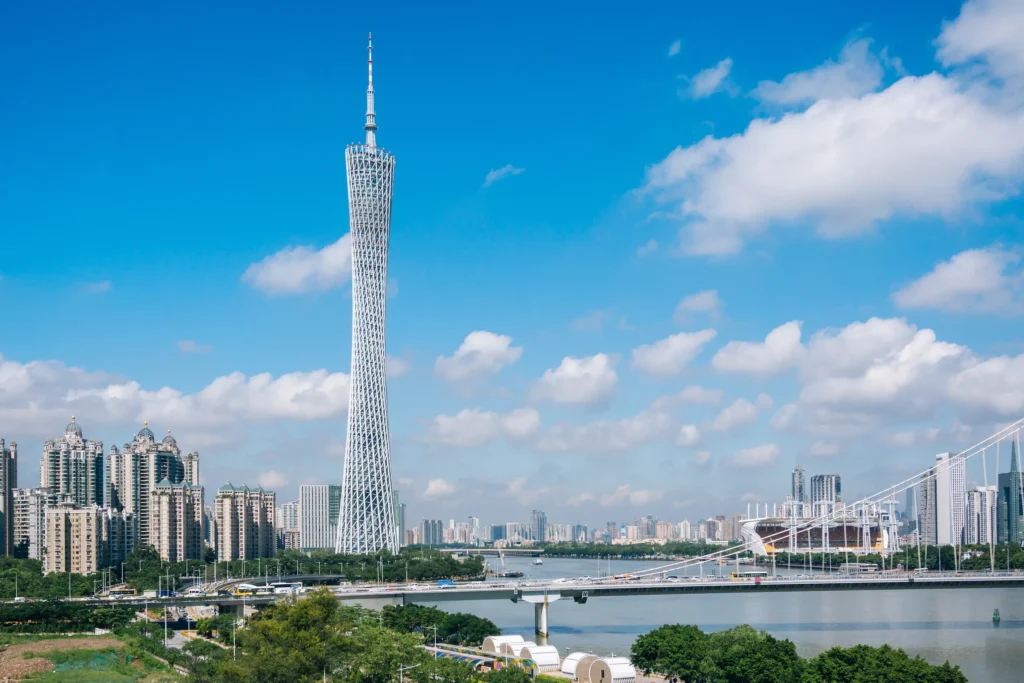
Canton Tower, designed by Mark Hemel and Barbara Kuit, features a twisting lattice exterior and the world’s tallest open-air staircase. The tower offers multiple observation decks, including the Bubble Tram, which provides a 360-degree panoramic view of the city.
15. Petronas Twin Towers (Kuala Lumpur, Malaysia)

Designed by César Pelli, these 88-story towers are connected by a sky bridge and grounded in Islamic architecture. The towers symbolize Malaysia’s rapid economic growth and feature an impressive double-decker sky bridge connecting the two structures.
16. Space Needle (Seattle, Washington)
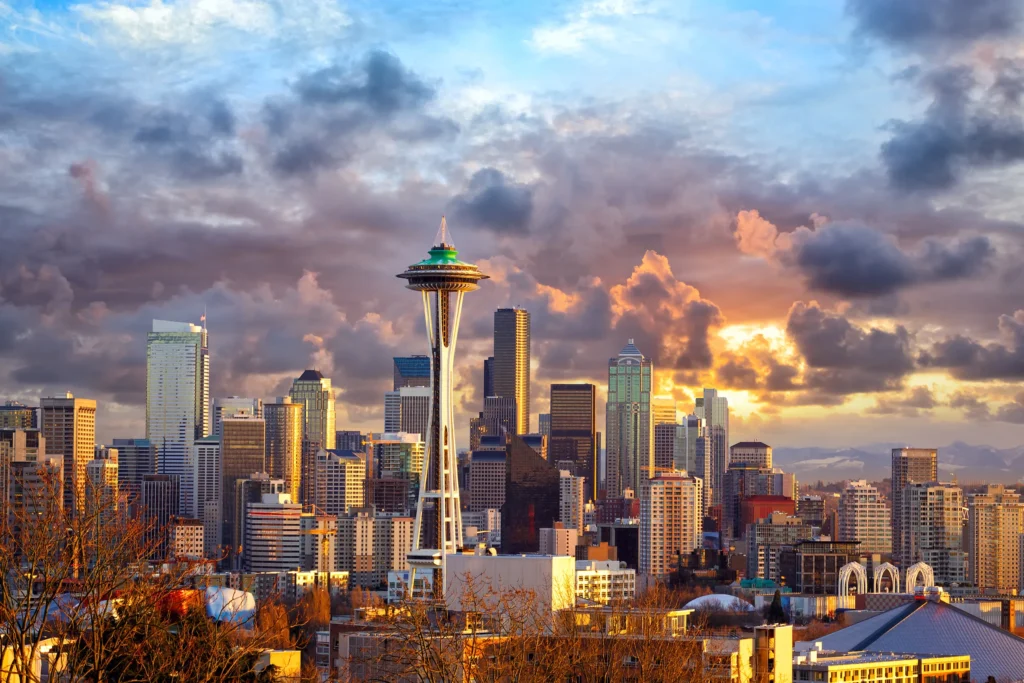
Seattle’s most recognizable structure was inspired by a combination of a tethered balloon and a flying saucer. It was designed by Edward E. Carlson and John Graham Jr. The Space Needle was built for the 1962 World’s Fair and continues to be a symbol of Seattle’s innovative spirit.
17. Oriental Pearl Tower (Shanghai, China)
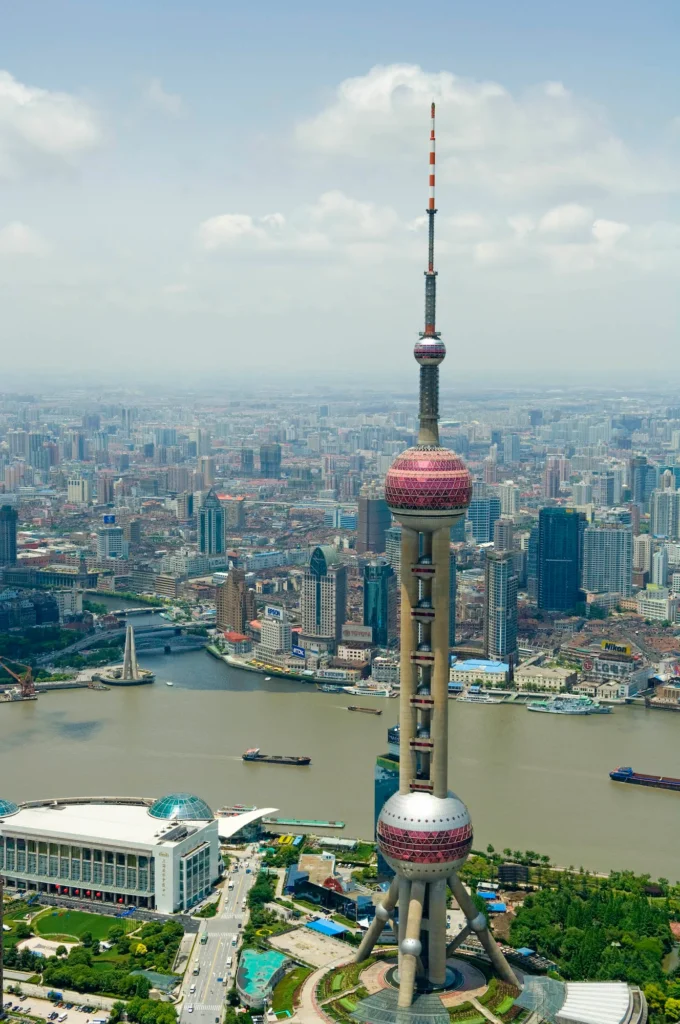
Designed by Jiang Huancheng, this tower is composed of 11 spheres connected by columns, creating a striking visual effect. The tower’s design is inspired by an ancient Chinese poem about pearls, and it features multiple observation decks and a revolving restaurant.
18. CN Tower (Toronto, Ontario)
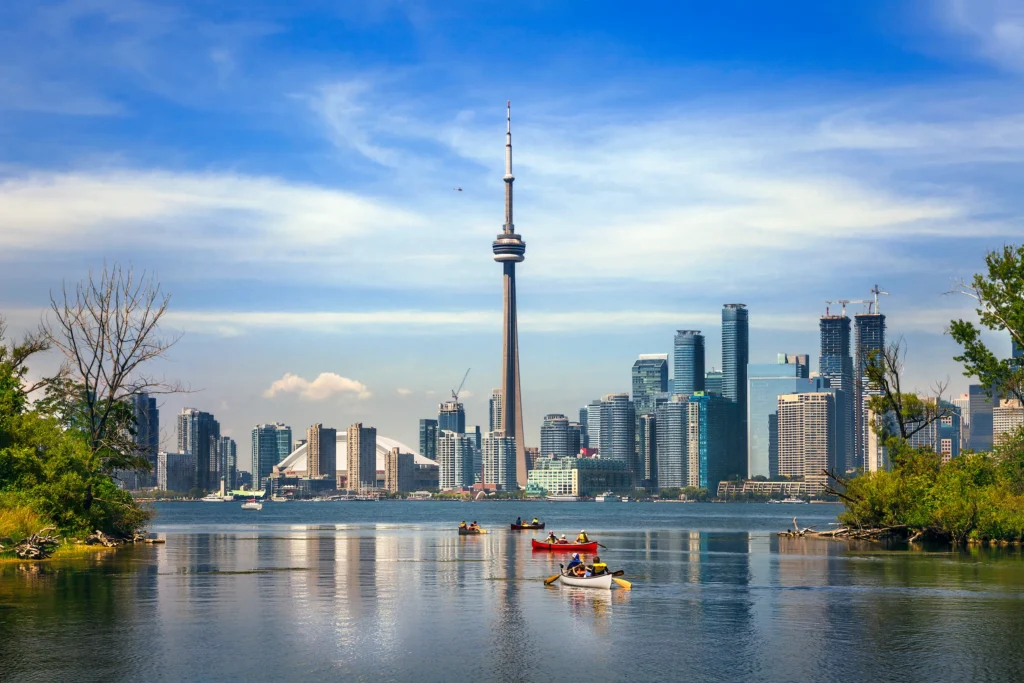
Designed by John Andrews, the CN Tower features a needle-like design and offers the exhilarating EdgeWalk experience. The tower includes an observation deck with a glass floor, providing thrilling views of the city below.
19. Burj Al Arab Jumeirah (Dubai, United Arab Emirates)
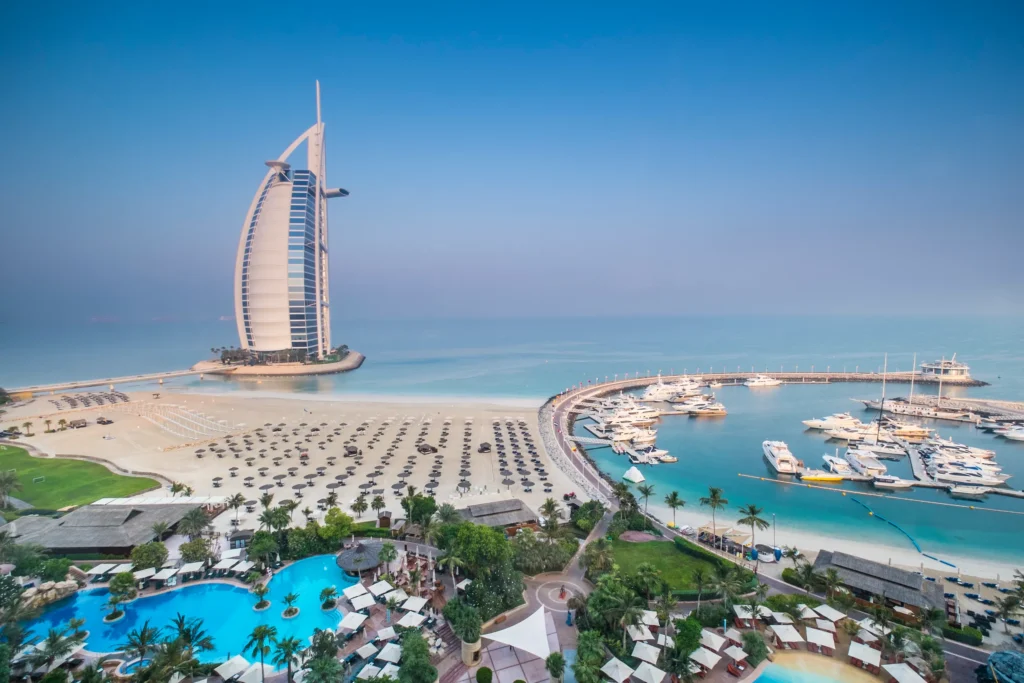
This sail-shaped luxury hotel, designed by Tom Wright, is situated on a small artificial island and resembles a ship sailing into port. The Burj Al Arab is known for its opulent interiors, including a helipad and an underwater restaurant.
20. Jin Mao Tower (Shanghai, China)
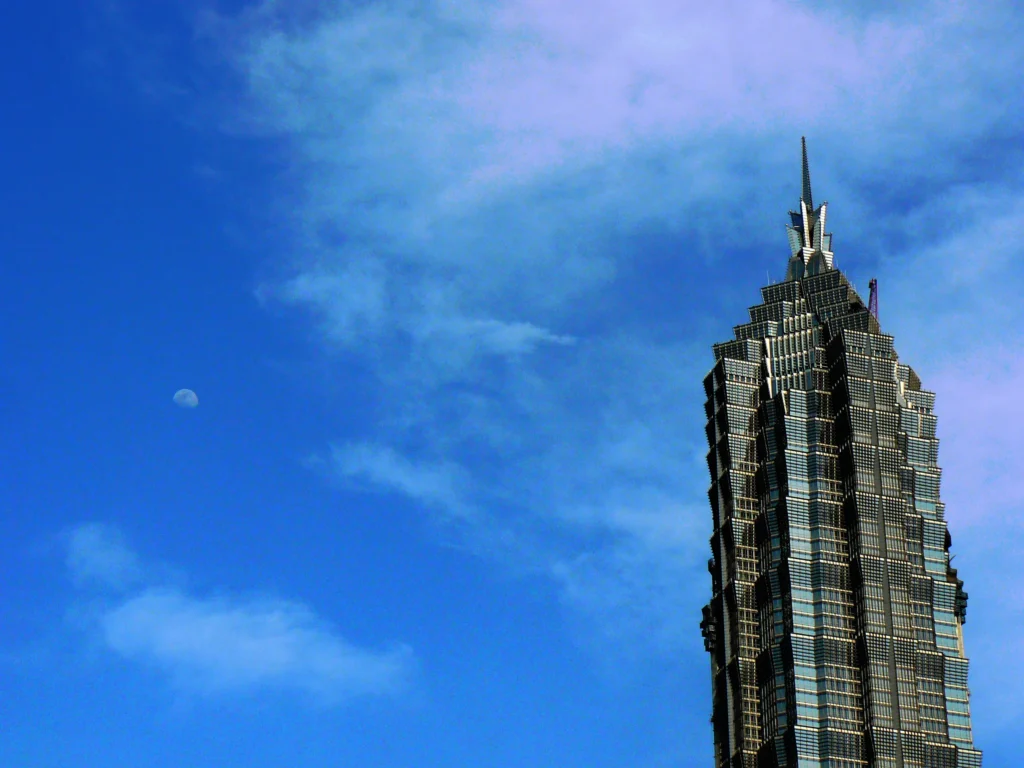
Inspired by traditional Chinese architecture, this postmodern skyscraper, designed by SOM, can withstand typhoon winds and earthquakes. The building features a stunning atrium and is home to the Grand Hyatt Shanghai hotel.
21. The Shard (London, England)

Renzo Piano’s design for The Shard was inspired by the railroad lines and church spires of London, creating a structure that seems to emerge from the River Thames. The Shard includes offices, restaurants, and the Shangri-La Hotel, as well as an observation deck with breathtaking views of London.
22. Shanghai Tower (Shanghai, China)
Designed by Gensler, Shanghai Tower is the greenest skyscraper, featuring a double layer of glass to reduce heat absorption. The building’s tiered exterior enhances its energy efficiency, and it houses offices, retail spaces, and a luxury hotel.
23. Burj Khalifa (Dubai, United Arab Emirates)
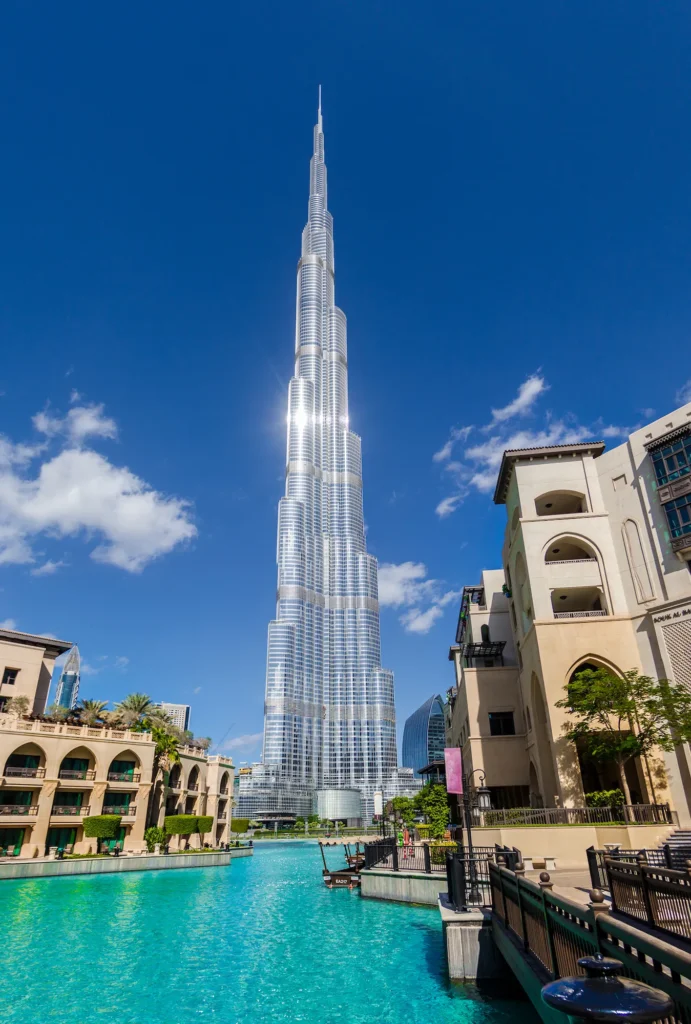
The tallest building in the world at 2,722 feet, Burj Khalifa, designed by Skidmore, Owings & Merrill, draws inspiration from Islamic architecture. The tower includes residential, commercial, and hotel spaces, along with the world’s highest observation deck.
24. Empire State Building (New York, New York)
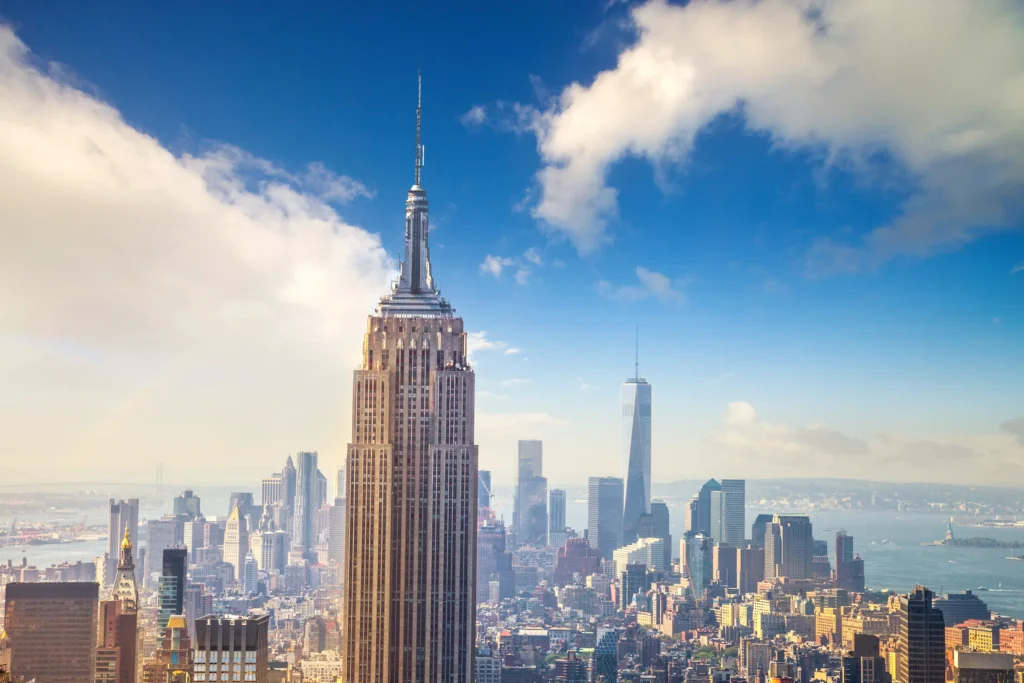
Designed by Shreve, Lamb & Harmon, the Empire State Building is one of New York’s most recognizable structures. The building’s Art Deco design and iconic status have made it a symbol of American ingenuity and ambition.
25. Chrysler Building (New York, New York)
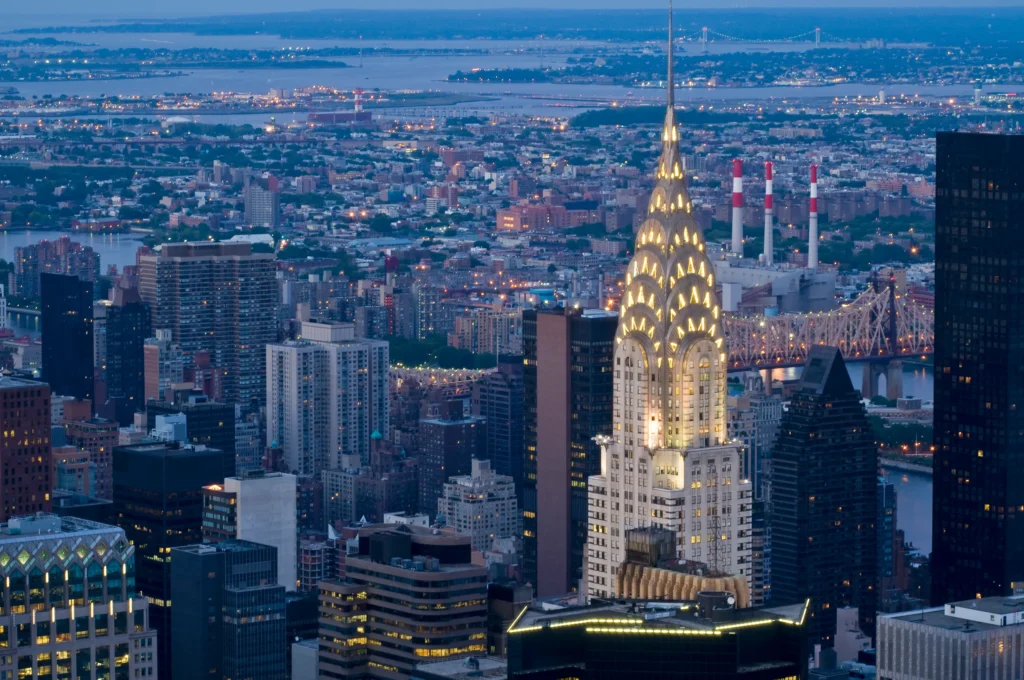
This Art Deco masterpiece, designed by William Van Alen, features numerous references to Chrysler’s history. The building’s distinctive spire and intricate details make it a beloved part of New York’s skyline.
26. One World Trade Center (New York, New York)
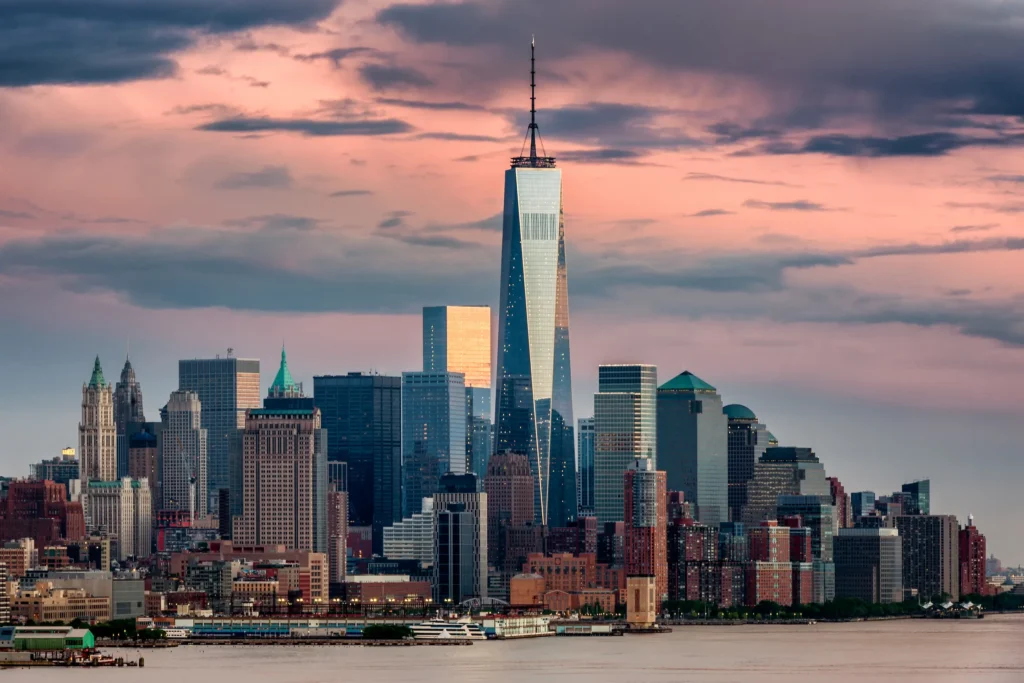
Standing at 1,776 feet, One World Trade Center, designed by Skidmore, Owings & Merrill, symbolizes American resilience and strength. The building features advanced safety and sustainability features and offers panoramic views from its observation deck.
27. Merdeka 118 (Kuala Lumpur, Malaysia)
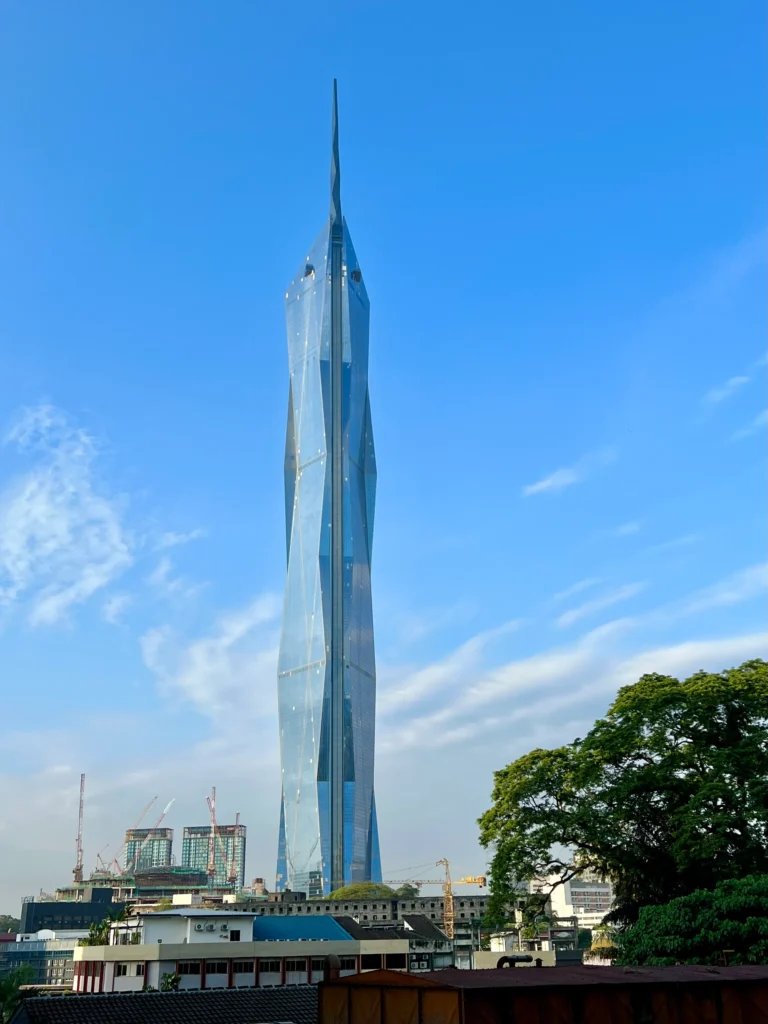
This 2,227-foot tall skyscraper, designed by Fender Katsalidis, incorporates elements inspired by traditional Malaysian arts and crafts. The building includes office spaces, a luxury hotel, and observation decks, making it a significant addition to Kuala Lumpur’s skyline.
28. Lotte World Tower (Seoul, South Korea)
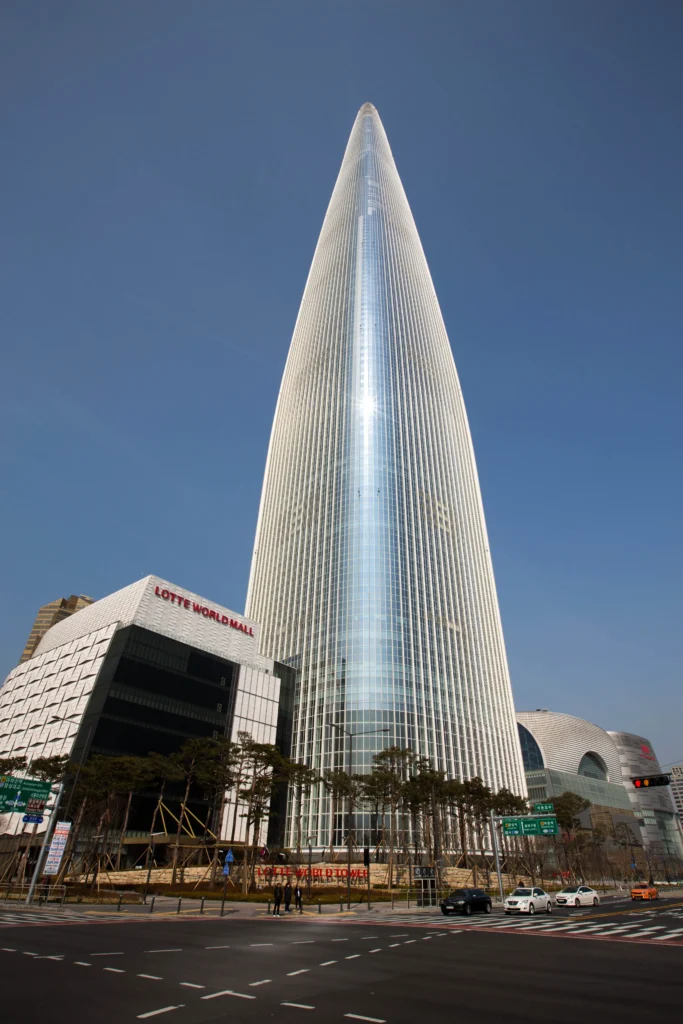
Designed by Kohn Pedersen Fox, this 1,820-foot tower incorporates Korean ceramics and calligraphy in its design. The tower features a luxury hotel, offices, and the world’s highest glass-bottomed observation deck.
29. Tianjin CTF Finance Centre (Tianjin, China)

Completed by Skidmore, Owings & Merrill in 2019, this 1,739-foot skyscraper features a tapered design to limit surface exposure. The building includes offices, residential spaces, and a luxury hotel, and it is LEED Gold certified.
30. Central Park Tower (New York City)
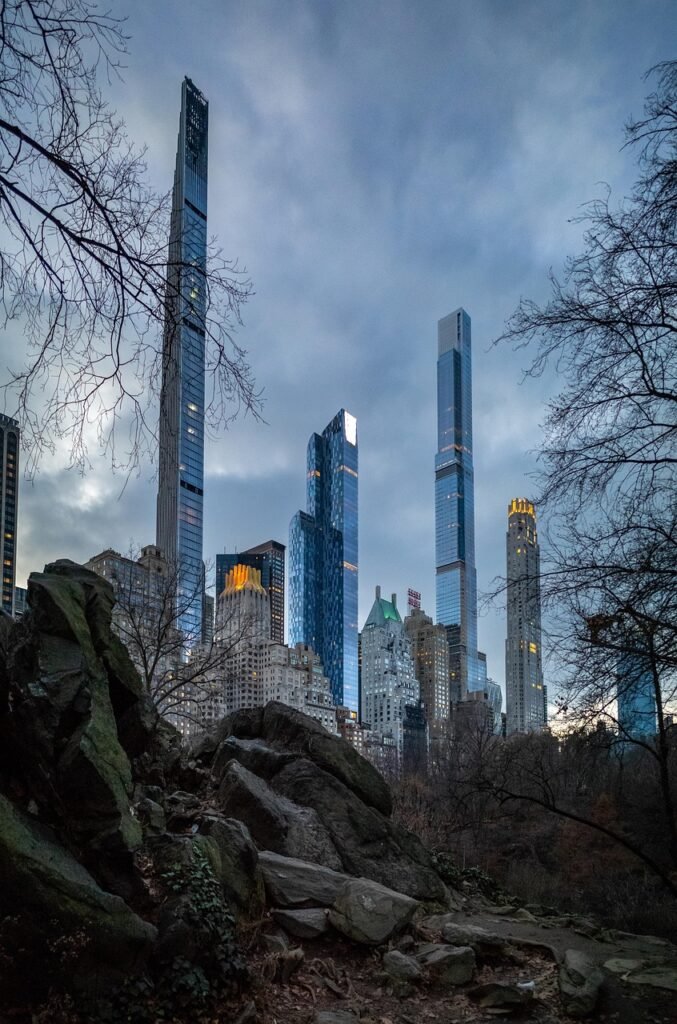
The tallest residential skyscraper in the world, Central Park Tower, designed by Adrian Smith + Gordon Gill Architecture, rises 1,550 feet above Manhattan. The building features luxury residences, a ballroom, and a private restaurant with stunning views.
31. China Resources Tower (Shenzhen, China)

Known as Spring Bamboo, this 1,288-foot skyscraper was designed by Kohn Pedersen Fox and features a tapered design inspired by a winter bamboo shoot. The building includes offices, retail spaces, and the Sky Hall, a cathedral-like space with panoramic views.
32. Bank of China Tower (Hong Kong)
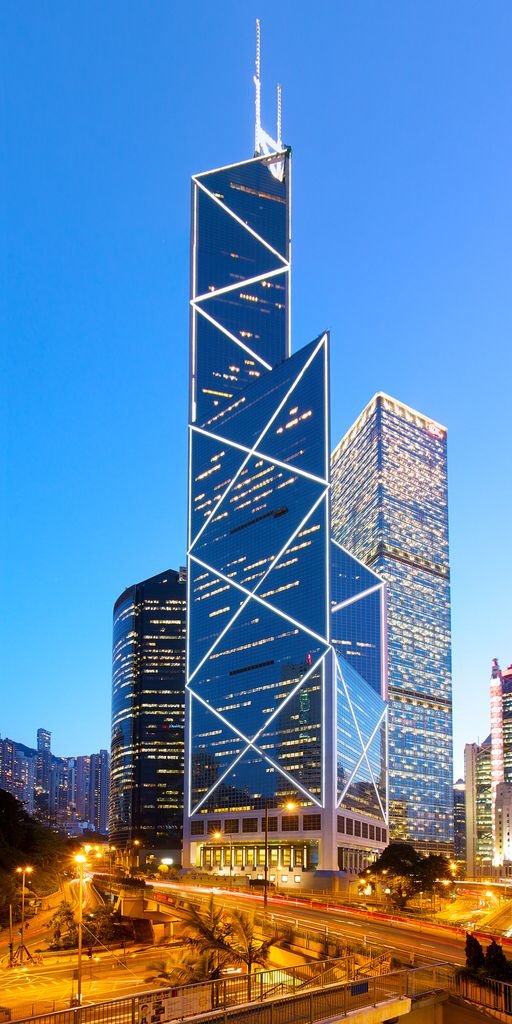
Designed by the renowned architect I.M. Pei, the Bank of China Tower in Hong Kong stands at 1,205 feet and was the tallest building in Asia upon its completion in 1989. Its unique design features sharp lines and reflective glass, which symbolize the resilience and growth of the city. The building’s structure is also said to be inspired by the form of bamboo, a symbol of prosperity and longevity in Chinese culture.
33. Saint Mary Axe (The Gherkin) (London, UK)
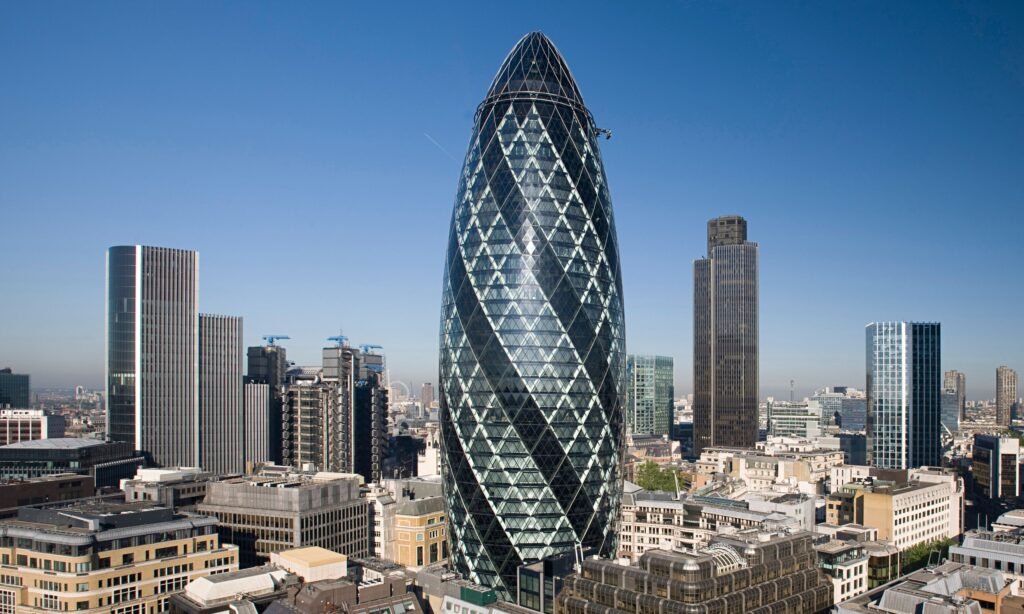
Commonly known as “The Gherkin,” this building is a striking modern skyscraper in London’s financial district. Designed by Norman Foster, it rises 591 feet and is known for its energy-efficient design. The building uses a double-glazed facade and natural ventilation to significantly reduce energy consumption.
34. International Commerce Centre (Hong Kong)
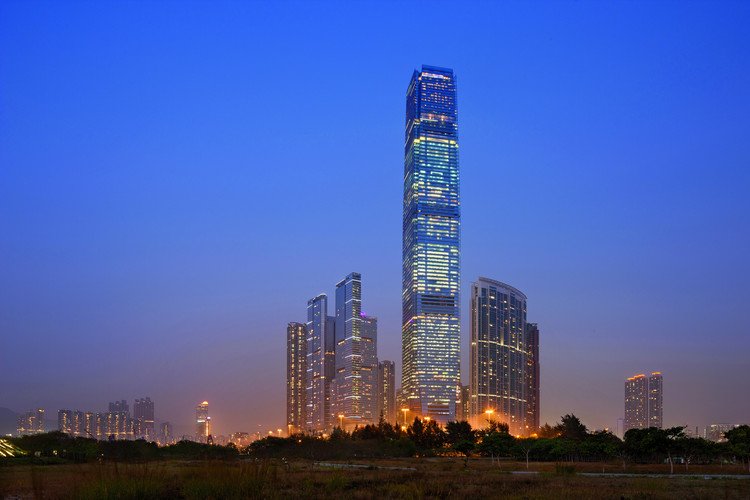
Standing at 1,588 feet, the International Commerce Centre is the tallest building in Hong Kong and offers stunning views from its Sky100 observation deck. The building includes office spaces, the Ritz-Carlton Hotel, and luxury residences, making it a multifunctional marvel in the city’s skyline.
35. Varso Tower (Warsaw, Poland)
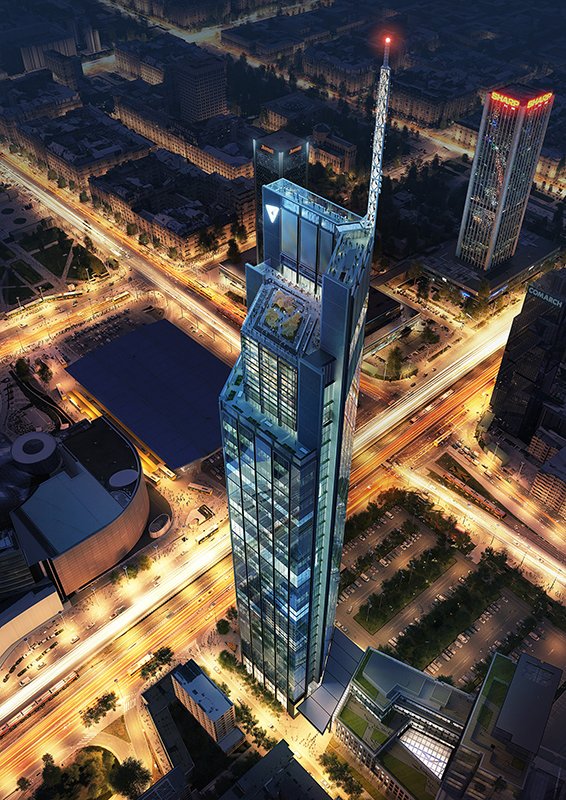
The tallest building in the European Union, Varso Tower stands at 1,017 feet and is a new addition to the Warsaw skyline. Completed in 2020, it features modern office spaces and observation decks offering panoramic views of the city. This skyscraper symbolizes Poland’s growing influence in the architectural world.
Final List of 35 Most Beautiful Skyscrapers
- Abode318 (Melbourne, Australia)
- Willis Tower (Chicago, Illinois)
- Transamerica Pyramid (San Francisco, California)
- Al Hamra Tower (Kuwait City, Kuwait)
- 432 Park Avenue (New York, New York)
- Marina Bay Sands Hotel (Singapore)
- Agbar Tower (Barcelona, Spain)
- Tokyo Skytree (Tokyo, Japan)
- Shanghai World Finance Center (Shanghai, China)
- Abraj Al-Bait Tower (Mecca, Saudi Arabia)
- John Hancock Center (Chicago, Illinois)
- Turning Torso (Malmö, Sweden)
- Taipei 101 (Taipei, Taiwan)
- Canton Tower (Guangzhou, China)
- Petronas Twin Towers (Kuala Lumpur, Malaysia)
- Space Needle (Seattle, Washington)
- Oriental Pearl Tower (Shanghai, China)
- CN Tower (Toronto, Ontario)
- Burj Al Arab Jumeirah (Dubai, United Arab Emirates)
- Jin Mao Tower (Shanghai, China)
- The Shard (London, England)
- Shanghai Tower (Shanghai, China)
- Burj Khalifa (Dubai, United Arab Emirates)
- Empire State Building (New York, New York)
- Chrysler Building (New York, New York)
- One World Trade Center (New York, New York)
- Merdeka 118 (Kuala Lumpur, Malaysia)
- Lotte World Tower (Seoul, South Korea)
- Tianjin CTF Finance Centre (Tianjin, China)
- Central Park Tower (New York City)
- China Resources Tower (Shenzhen, China)
- Bank of China Tower (Hong Kong)
- Saint Mary Axe (The Gherkin) (London, UK)
- International Commerce Centre (Hong Kong)
- Varso Tower (Warsaw, Poland)
These skyscrapers are not just tall structures but symbols of human achievement, each contributing to the unique tapestry of their city’s skyline. They represent the pinnacle of architectural innovation and the relentless pursuit of beauty and functionality.

